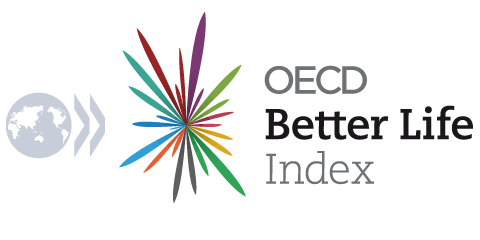Did you know?
| indicator | value | unit |
|---|---|---|
| Population | 1.3 | mil. |
| Visitors per year | 1.6 | mil. |
| Renewable energy | 11.97 | % |
How’s Life?
Estonia has made progress over the last decades in terms of improving the quality of life of its citizens. Estonia performs well across a number of well-being dimensions relative to other countries in the Better Life Index. Estonia outperforms the average in education, environmental quality, safety and social connections. It underperforms average in income, health, civic engagement and life satisfaction. These assessments are based on available selected data.
Money, while it cannot buy happiness, is an important means to achieving higher living standards. In Estonia, the average household net-adjusted disposable income per capita is USD 23 784 a year, less than the OECD average of USD 30 490 a year.
In terms of employment, about 74% of people aged 15 to 64 in Estonia have a paid job, above the OECD employment average of 66%. Some 76% of men are in paid work, compared with 72% of women. In Estonia, 2% of employees work very long hours in paid work, below the OECD average of 10%, with 3% of men working very long hours in paid work compared with 1% of women.
Good education and skills are important requisites for finding a job. In Estonia, 91% of adults aged 25-64 have completed upper secondary education, higher than the OECD average of 79%. However, completion varies between men and women, as 87% of men have successfully completed high school compared with 94% of women. In terms of the quality of the education system, the average student scored 526 in reading literacy, maths and science in the OECD's Programme for International Student Assessment (PISA). This score is higher than the OECD average of 488. On average in Estonia, girls outperformed boys by 9 points, above the average OECD gap of 5 points.
In terms of health, life expectancy at birth in Estonia is around 79 years, two years lower than the OECD average of 81 years. Life expectancy for women is 83 years, compared with 75 for men. The level of atmospheric PM2.5 – tiny air pollutant particles small enough to enter and cause damage to the lungs – is 5.9 micrograms per cubic meter, below the OECD average of 14 micrograms per cubic meter. In Estonia, 86% of people say they are satisfied with the quality of their water, slightly higher than the OECD average of 84%.
Concerning the public sphere, there is a strong sense of community and moderate levels of civic participation in Estonia, where 95% of people believe that they know someone they could rely on in time of need, more than the OECD average of 91%. Voter turnout, a measure of citizens' participation in the political process, was 64% during recent elections, lower than the OECD average of 69%. Social and economic status can affect voting rates; voter turnout for the top 20% of the population is an estimated 69% and for the bottom 20% it is an estimated 56%.
When asked to rate their general satisfaction with life on a scale from 0 to 10, Estonians gave it a 6.5 grade on average, lower than the OECD average of 6.7.
For more information on estimates and years of reference, see FAQ section and BLI database.
Topics
OECD in Action
OECD Economic Surveys: Estonia
OECD's periodic reviews of Estonia's economy. Each survey examines recent economic developments, policy and prospects, and presents a series of recommendations.
Read this chapter